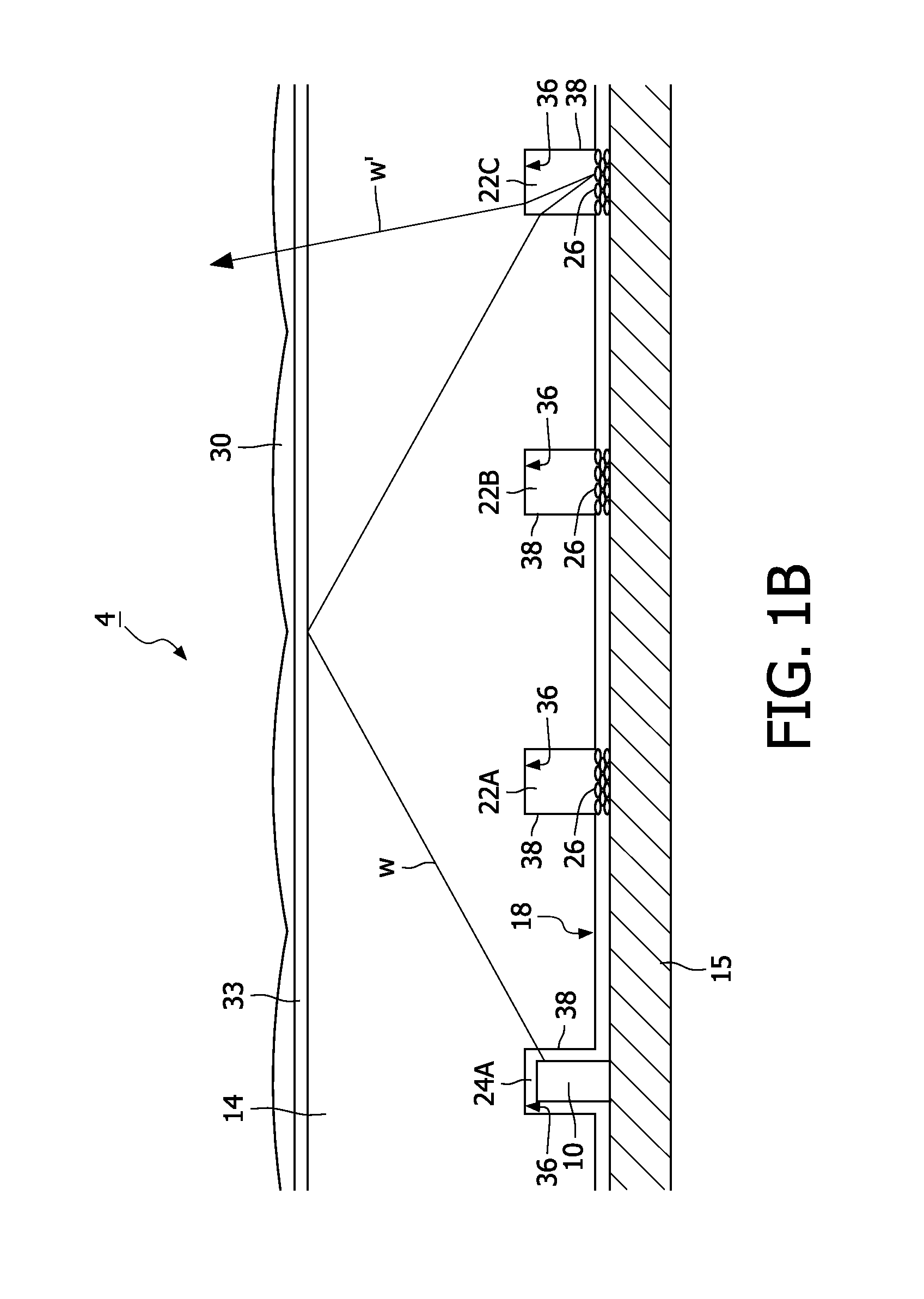Illumination system for luminaires and display devices
a technology of illumination system and display device, which is applied in the direction of planar/plate-like light guides, lighting and heating apparatus, instruments, etc., can solve the problems of poor uniformity of light emitted from the light guide plate to the image display device, uniform light emission throughout the matrix, and relatively poor uniformity. , to achieve the effect of improving uniformity
- Summary
- Abstract
- Description
- Claims
- Application Information
AI Technical Summary
Benefits of technology
Problems solved by technology
Method used
Image
Examples
Embodiment Construction
[0035]FIGS. 1A and 1B are cross-sectional views of an illumination system 2, 4 according to the invention. The illumination system 2, 4 comprises at least one light source, for example, a light-emitting diode 8, 10 (further also referred to as LED) for emitting light of a predominant wavelength R, G, B, UV, W, for example, the predominant wavelength
[0036]White W (see FIG. 1A) or, for example, the predominant wavelength Ultraviolet UV (see FIG. 2). The illumination system 2, 4 further comprises a light-transmitting panel 14 which comprises a light-emitting window 16, a rear wall 18 situated opposite said light-emitting window 16, and edge walls 20 extending between the light-emitting window 16 and the rear wall 18. The light-transmitting panel 14 is arranged to couple at least part of the light W emitted by the LED 8, 10 into the light-transmitting panel 14. This can be done, for example, via the edge wall 20 comprising, for example, a light entrance window 21 (see FIG. 1A) or, for e...
PUM
 Login to View More
Login to View More Abstract
Description
Claims
Application Information
 Login to View More
Login to View More - R&D
- Intellectual Property
- Life Sciences
- Materials
- Tech Scout
- Unparalleled Data Quality
- Higher Quality Content
- 60% Fewer Hallucinations
Browse by: Latest US Patents, China's latest patents, Technical Efficacy Thesaurus, Application Domain, Technology Topic, Popular Technical Reports.
© 2025 PatSnap. All rights reserved.Legal|Privacy policy|Modern Slavery Act Transparency Statement|Sitemap|About US| Contact US: help@patsnap.com



